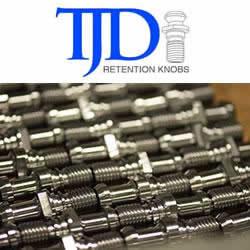Packaging the future

Automating packaging processes can improve productivity, quality and safety on site. Unsurprisingly then, it has become a crucial investment for packaging facilities. But, where do you start? Here, Claudia Jarrett, United States country manager of automation parts supplier, EU Automation, highlights the key considerations when choosing robotics and automation for packaging applications.
With the rise of Industry 4.0, more companies are opting to add automation to their processes — and packaging processes are no exception. This increasingly common tactic is driven by the same reasons that automation and robotics were first brought to the manufacturing workplace — to free human workers from dangerous packaging tasks jobs, to eliminate errors and to cut costs.
Whether a packaging company is well accustomed to automation, or they’re taking the first leap into investing in the technology, the considerations should be the same.
Automation can be complex. In fact, the phrase ‘automation’ refers to an array of technology. Any piece of automatic or semi-automatic machinery on a factory floor — whether that’s a simple conveyor or a complicated industrial robot — is technically automation. Most packaging processes already use some form of automation on site. Palletising robots, for instance, are commonplace in most large-scale warehousing facilities. However, new varieties of robotic equipment are becoming available to take on more complicated packaging tasks.
However, adding complicated automation to a packaging process is no easy feat. In fact, the size and complexity of the sites separate packaging processes must be considered carefully. The larger the system, the more likely plant managers should consider a multi-disciplinary robot that can perform several steps simultaneously. Alternatively, they may choose to invest in several different machines to manage separate task.
Consider this as an example. A warehousing and distribution facility for fast moving consumer goods (FMCG) may have separate packaging areas for both incoming and outgoing goods. At the site, incoming boxes must be opened and unpacked before the materials can be sorted for distribution. To speed up this process, the site could invest in an automated box opening solution — an encased robot which can automatically cut boxes.
This type of robotic machinery is beneficial reducing the likelihood of accidents on the shop floor. By taking human workers out of the equation, and therefore removing the need for handheld knives in the warehouse, the chance of injury is automatically reduced.
That said, this robot is only suitable for one small process in the facility. Should the site wish to fully automate its packaging process, the plant manager will need to invest in several different types of automated equipment. For instance, on a line that incorporates several processes, a six-axis robot could be used to stack and palletise finished products — once they have been opened by our automated box opening solution. Following this, an automated guided vehicle (AGV) might be required to move them to a different area of the factory floor.
Naturally, the more automation that is involved, the more complicated the integration process gets. With this in mind, plant managers should consider to what degree they want to automate — and how much is actually necessary.
Smaller factories may not have the same investment capabilities and instead, should look to make small incremental processes to automate their facilities. For example, adding sensors to a pre-existing machine could solve a common problem during cartoning processes.
During this process, machines cannot reliably detect when a box flap is partially up or down, causing a misread. For packaging, this can cause a stoppage in the production line. Adding photoelectric sensors with background suppression could allow the technology to scan the angles of the packaging and determine if the flap angle will cause a problem with case-sealing operations.
If this is the case, the sensor triggers an output message to halt the line, allowing an operator to correct the situation. Plant managers in packaging facilities can use information from these sensors to fine tune case erecting, packing and sealing machines, providing a cost-effective alternative to expensive automation
Picking and packing processes are another area which could benefit from a smaller automation investment. This process is often where the biggest bottlenecks occur. To combat this, manufacturers can choose an end of arm tooling design (EOAT) on a robot that can pick one or multiple products at a time. The majority of tooling designed for pick-and-pack applications use lightweight vacuum cups or mechanical and multi product grippers for higher throughput. Regardless of the EOAT open used, this provides a sure fire way of automating an otherwise tedious process.
Robotic equipment can be added to front-of-line processes too. Depalletizing, loading, line charging or thermo forming packaging with an injection moulding machine are all possible options to improve packaging processes. Similarly, labelling, packing, palletizing and wrapping products — tasks that involve strenuous, laborious manual work —can all be achieved by automated systems.
Whether the facility is large or small, there are options to automate. From sensors that relay information to operators, to adding small robotic processes to existing machinery, automation cannot be overlooked in packaging.
Comments (0)
This post does not have any comments. Be the first to leave a comment below.
Featured Product

